Shiraz, often referred to as the city of poets, wine, and flowers, is one of Iran's most captivating and historically rich cities. Nestled in the southwest of the country, Shiraz is renowned for its splendid gardens, exquisite architecture, and profound cultural heritage. This ancient city, which has been a center of Persian civilization for over 2,000 years, boasts numerous historical sites that draw visitors from around the world.
Top Historical Places in Shiraz
Shiraz, the heart of Persian culture, is home to some of Iran's most significant historical sites that capture the essence of the country's rich heritage. The majestic Persepolis, the ancient ceremonial capital of the Achaemenid Empire, stands as a testament to Persia's glory, with its impressive ruins and intricate stone carvings. The Nasir al-Mulk Mosque, also known as the Pink Mosque, is famed for its stunning stained-glass windows that create a kaleidoscope of colors, making it a photographer's paradise. The Tomb of Hafez, a revered Persian poet, is another iconic site, attracting visitors who come to pay homage and soak in the serene ambiance of its gardens. The Eram Garden, a UNESCO World Heritage Site, offers a peaceful retreat with its beautiful landscaping and historical significance. Another notable site is the Arg of Karim Khan, a grand citadel from the Zand dynasty that showcases the architectural brilliance of the era. The Vakil Bazaar provides a glimpse into the vibrant trade and culture of Shiraz, with its bustling atmosphere and traditional goods. These historical places in Shiraz not only highlight the city's architectural and artistic achievements but also offer a deep connection to its storied past.
Nasir al-Mulk Mosque
The Nasir al-Mulk Mosque in Shiraz, often referred to as the Pink Mosque, is an architectural marvel that captivates visitors with its vibrant beauty and intricate design. Built during the Qajar dynasty in the late 19th century, this mosque is renowned for its stunning stained-glass windows that create a mesmerizing play of light and color. As the morning sun shines through the multicolored glass, the interior of the mosque is transformed into a dazzling array of colors, casting vivid patterns on the floor, walls, and arches. The mosque's exquisite tilework, featuring floral and geometric patterns in shades of pink, blue, and yellow, adds to its enchanting appeal. The Nasir al-Mulk Mosque also boasts a beautiful prayer hall with delicately carved wooden doors and richly decorated ceiling panels. The mosque's exterior is equally impressive, with its elegant arches and decorative tiles that showcase the craftsmanship of Persian artisans. This unique blend of art and architecture makes the Nasir al-Mulk Mosque not only a place of worship but also a testament to the rich cultural and artistic heritage of Iran. Visitors to Shiraz are often drawn to this iconic landmark, eager to experience the magical ambiance created by its stunning interplay of light and color.
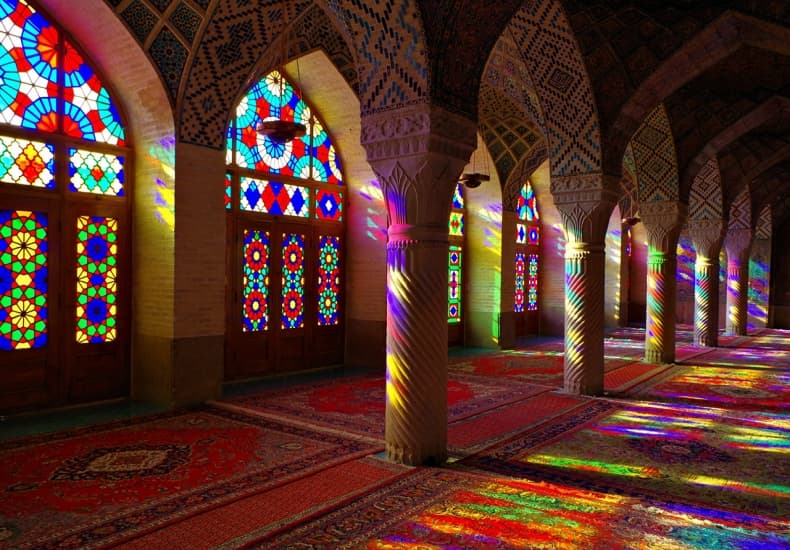
Tomb of Hafez
The Tomb of Hafez in Shiraz is a serene and culturally significant site dedicated to one of Iran's most beloved poets, Hafez. Nestled within the lush Hafezieh Gardens, this tomb is a place of pilgrimage for poetry lovers and admirers of Hafez's work. The tomb itself is an exquisite octagonal pavilion made of white marble, resting under a dome adorned with intricate mosaic tiles in blue, green, and white, reflecting the artistic heritage of the region. Engraved on the tombstone are verses from Hafez's poetry, capturing the profound wisdom and beauty of his words.
The surrounding gardens enhance the tranquil and reflective atmosphere, with their well-manicured lawns, fragrant flowers, and ancient cypress trees, creating a perfect setting for contemplation and inspiration. Visitors often come here not only to pay their respects but also to immerse themselves in the poetic ambiance, reading Hafez's poems or simply enjoying the peaceful environment. The tomb's serene setting and architectural elegance make it a symbol of Shiraz's cultural richness and literary legacy. Whether a poetry enthusiast or a casual traveler, a visit to the Tomb of Hafez offers a deep connection to Iran's literary tradition and a moment of quiet reflection amid the beauty of nature.

Eram Garden
Eram Garden, located in Shiraz, is a renowned historical garden that exemplifies the beauty and elegance of Persian garden design. This UNESCO World Heritage Site is celebrated for its exquisite landscaping, combining lush greenery, vibrant flowers, and flowing water to create a serene and enchanting environment. The garden is laid out in a classical Persian design with symmetrical pathways, reflecting pools, and fountains, all surrounded by a diverse array of trees and plants, including cypress, palm, and fruit trees.
At the heart of Eram Garden stands the magnificent Qajar-era mansion, adorned with intricate tilework and stucco decorations that highlight the architectural prowess of the period. The mansion’s grand veranda offers a stunning view of the garden, providing a perfect spot for visitors to relax and soak in the tranquil ambiance. The garden's vibrant flowers, particularly the famous Shiraz roses, add to the sensory delight, filling the air with their delicate fragrance.
Eram Garden has long been a place of inspiration for poets, artists, and travelers, symbolizing the harmony between nature and human creativity. Its well-preserved beauty continues to attract visitors from around the world, offering a peaceful retreat and a glimpse into the rich cultural heritage of Iran. A stroll through Eram Garden is truly a journey through the timeless elegance of Persian artistry and horticulture.
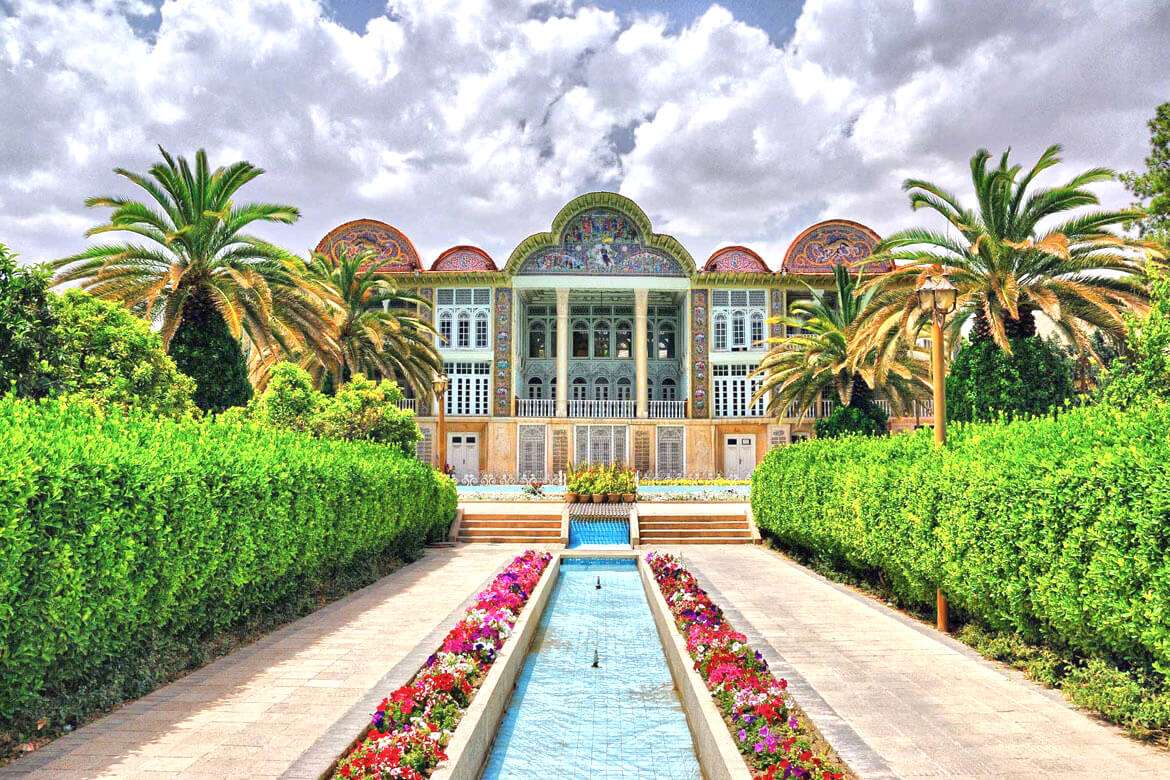
Vakil Bazaar
Vakil Bazaar, located in the heart of Shiraz, is one of Iran's most famous and historical marketplaces, offering a vibrant and authentic shopping experience. Built during the Zand dynasty in the 18th century by Karim Khan Zand, the bazaar is a testament to Persian architectural ingenuity and cultural richness. The bazaar's design features traditional vaulted brick ceilings, ornate arches, and spacious courtyards, creating a visually stunning and atmospheric setting. Wandering through the labyrinthine alleys of Vakil Bazaar, visitors are treated to a sensory feast of sights, sounds, and scents. Stalls and shops brim with a diverse array of goods, including colorful textiles, intricate carpets, fragrant spices, handmade jewelry, and traditional handicrafts. The bazaar is also renowned for its selection of Persian sweets and delicacies, offering a taste of local culinary traditions.
In addition to shopping, Vakil Bazaar is a cultural hub where visitors can engage with friendly local vendors and artisans, learn about Persian customs, and experience the bustling daily life of Shiraz. The bazaar's strategic location also provides easy access to nearby historical sites, such as the Vakil Mosque and Vakil Bathhouse, making it a must-visit destination for anyone exploring the cultural and historical treasures of Shiraz.

Qavam House
Qavam House, also known as Narenjestan-e Qavam, is a splendid historical mansion located in Shiraz, showcasing the opulence and architectural brilliance of the 19th century Qajar era. This elegant residence was built between 1879 and 1886 by the Qavam family, who were influential merchants and political figures during that time. The mansion is renowned for its stunning Persian architecture, intricate tilework, and beautifully landscaped gardens filled with fragrant orange trees, which gave the house its name "Narenjestan," meaning "orange garden."
The interior of Qavam House is equally captivating, featuring exquisite stained-glass windows, intricate mirror work, and finely detailed wooden ceilings. The richly decorated reception halls and rooms, adorned with vibrant frescoes and elegant stucco designs, reflect the grandeur and sophistication of Persian craftsmanship. Visitors can also explore the underground hall, where the temperature is naturally regulated, providing a cool retreat from the heat.
The meticulously maintained garden, with its symmetrical layout, water fountains, and lush greenery, offers a tranquil escape and a glimpse into the traditional Persian garden design. Today, Qavam House serves as a museum, allowing visitors to immerse themselves in the cultural and historical heritage of Shiraz. Its architectural beauty and serene ambiance make it a must-visit destination for anyone exploring the city's rich past.

Vakil Mosque
Vakil Mosque, located in the heart of Shiraz, is an architectural masterpiece that epitomizes the grandeur of Zand dynasty design. Built in the mid-18th century by Karim Khan Zand, this mosque is a testament to Persian architectural ingenuity and religious artistry. The mosque spans an impressive area and features a striking entrance portal adorned with intricate tilework and floral motifs, typical of the Zand era.
Upon entering, visitors are greeted by a vast courtyard surrounded by exquisite arcades and arches, each meticulously decorated with vibrant tiles that showcase a blend of floral, geometric, and calligraphic designs. The mosque's prayer hall is particularly notable for its stunning vaulted ceiling, supported by 48 monolithic pillars carved from stone, each embellished with spiraling patterns. These columns create an awe-inspiring visual effect, leading the eye towards the intricately decorated mihrab, the niche indicating the direction of Mecca.
The Vakil Mosque also boasts an impressive iwans (open-fronted halls) and a serene, marble-paved central courtyard that reflects the architectural brilliance of the period. The tranquil ambiance of the mosque, combined with its rich historical and cultural significance, makes it a must-visit destination for anyone exploring Shiraz. This architectural gem not only serves as a place of worship but also as a symbol of the artistic and cultural legacy of the Zand dynasty.

Tomb of Saadi
The Tomb of Saadi, located in Shiraz, is a beautiful and revered site dedicated to the famous Persian poet Saadi. Nestled within the tranquil Saadieh Gardens, this tomb is a place of pilgrimage for literature enthusiasts and admirers of Saadi's profound work. The tomb itself is an elegant structure made of white marble, adorned with intricate tilework and surrounded by fragrant flowers and cypress trees, creating a serene and reflective atmosphere. The inscription of Saadi's poems on the tombstone adds to the site’s cultural significance, as visitors often come to read his poetry and pay their respects. The surrounding gardens are meticulously maintained, offering a peaceful retreat where visitors can walk along shaded paths, sit by the reflecting pool, and absorb the poetic ambiance. The Tomb of Saadi serves as both a cultural monument and a symbol of the enduring legacy of Persian literature, providing a connection to the timeless wisdom and beauty of Saadi’s writings. Whether you're a poetry lover or a casual traveler, a visit to the Tomb of Saadi offers a serene and inspiring experience, highlighting the rich cultural heritage of Shiraz.
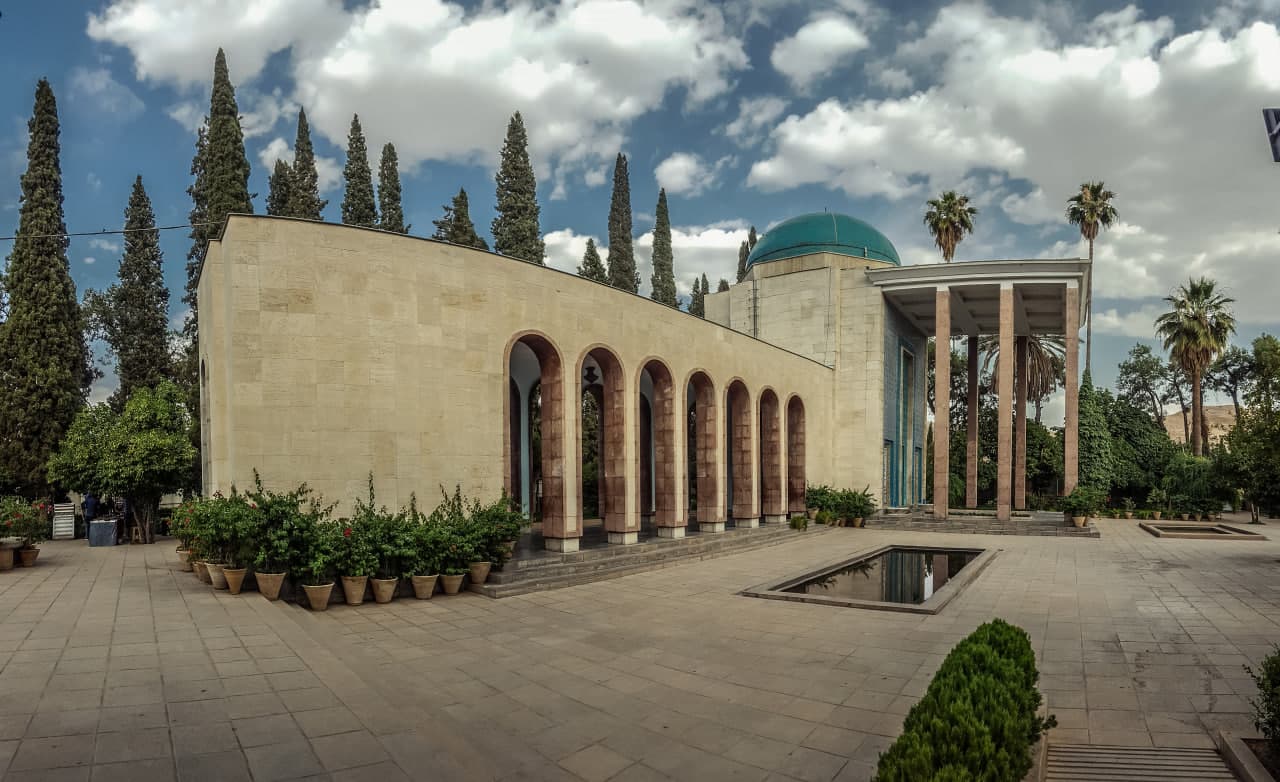
Zinat ol-Molk House
Zinat ol Molk House, located in the historical city of Shiraz, is a stunning example of Qajar-era architecture and serves as a cultural and historical treasure. This exquisite mansion was built in the late 19th century by Mirza Ibrahim Khan and named after his daughter, Zinat ol Molk. The house is renowned for its elegant design and intricate decorations, which include beautiful stained-glass windows, detailed stucco work, and fine mirror mosaics. One of the main attractions of Zinat ol Molk House is its beautifully painted ceilings and walls, adorned with vivid floral patterns and scenes from Persian literature and mythology.
The house features numerous rooms, each showcasing the craftsmanship and artistic flair of the period. The central courtyard, with its tranquil pool and lush garden, provides a serene setting that enhances the mansion's charm. Visitors can explore the various rooms and halls, gaining insight into the lifestyle of the Qajar aristocracy and the architectural splendor of that era. Today, Zinat ol Molk House is part of the larger Narenjestan-e Qavam complex and serves as a museum, offering a glimpse into Shiraz's rich cultural heritage. The house's blend of historical significance, architectural beauty, and artistic detail makes it a must-visit destination for anyone exploring the cultural and historical landscape of Shiraz.
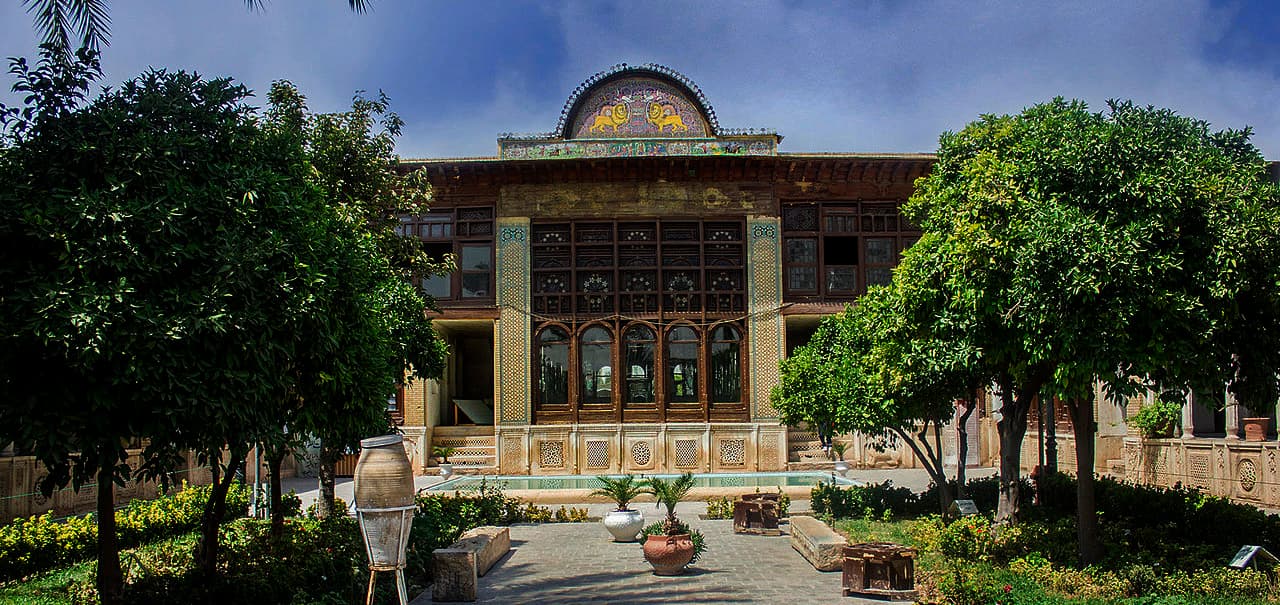
Vakil Bath
Vakil Bath, located in Shiraz, is a fascinating historical site that showcases the luxurious bathing culture of the Zand era. Built in the 18th century by Karim Khan Zand, this traditional Persian bathhouse, also known as a hammam, was designed to serve the public with a place for hygiene and social interaction. The Vakil Bath is a marvel of Persian architecture, featuring intricately designed interiors with beautiful tilework, stucco decorations, and impressive domed ceilings.
Upon entering, visitors are greeted by a large, central hall, which leads to various sections of the bath, including the dressing room, the main hot bath chamber, and private bathing areas. The bathhouse is equipped with an ingenious heating system, consisting of underground channels that circulated hot water and steam, creating a comfortable and warm environment for bathers. The walls and ceilings are adorned with colorful mosaics and traditional Persian designs that reflect the artistic heritage of the period.
Vakil Bath also served as a social hub, where people gathered to relax, converse, and conduct business. Today, it stands as a well-preserved monument, offering visitors a glimpse into the past and the cultural practices of the Zand dynasty. Exploring Vakil Bath provides a unique and enriching experience, highlighting the architectural ingenuity and social importance of traditional Persian bathhouses.
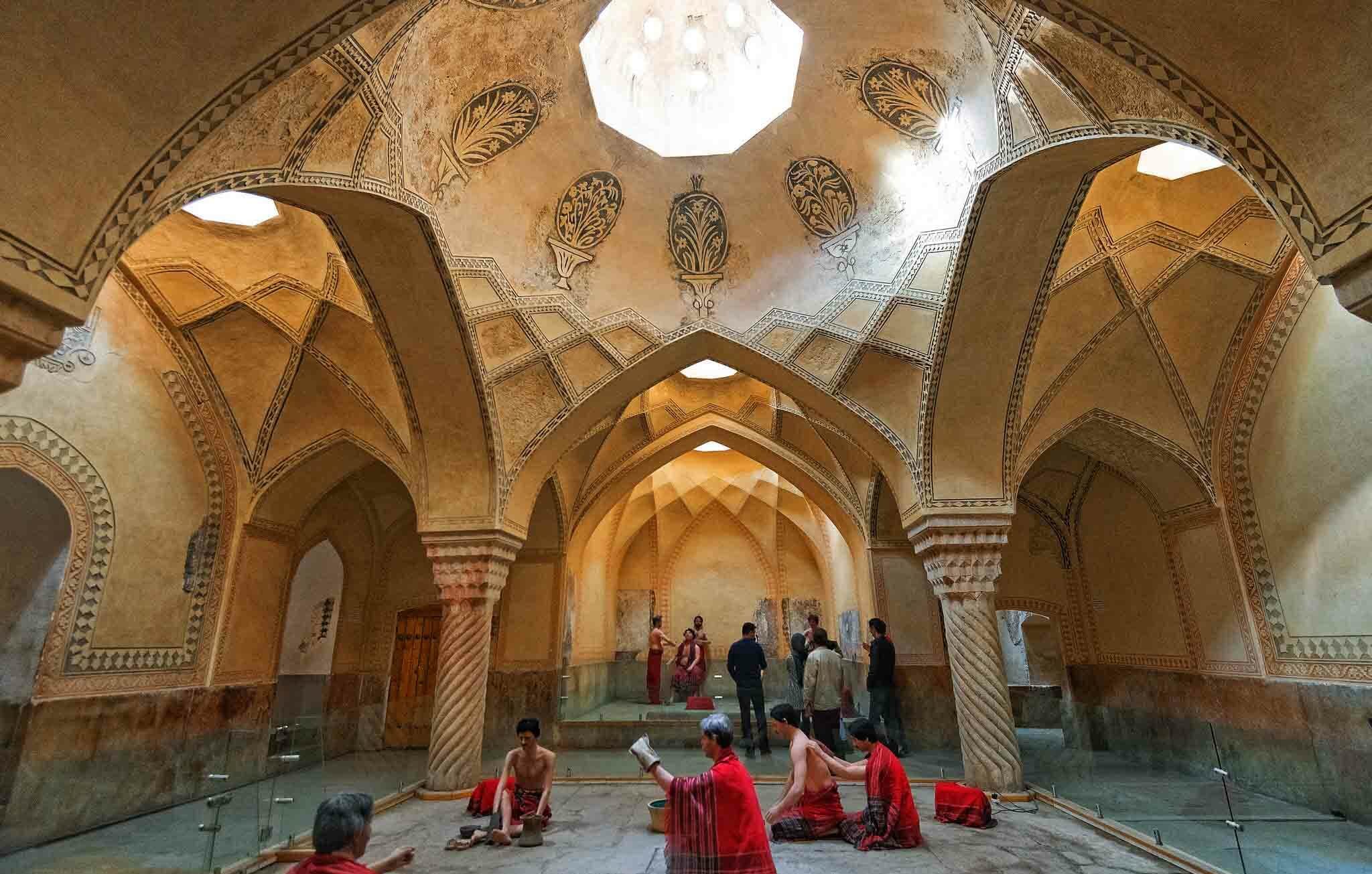
Arg-e Karim Khan
Arg-e Karim Khan, also known as the Karim Khan Citadel, is a historic fortress in the heart of Shiraz that dates back to the Zand dynasty in the 18th century. Built by Karim Khan Zand, the founder of the Zand dynasty, the citadel served as both a military fortress and a royal residence. The structure showcases the architectural brilliance of the era with its robust, high walls and imposing towers that dominate the skyline. The citadel's design reflects a blend of residential elegance and military functionality, with ornate decorations and strategic fortifications.
The interior of Arg-e Karim Khan features beautifully landscaped gardens and a central courtyard, providing a tranquil retreat within the fortress walls. The residential quarters are adorned with intricate tile work, exquisite stucco, and vibrant frescoes that display the artistic craftsmanship of the time. The citadel's bathhouse, with its elaborate heating system and stunning decorations, is a testament to the luxurious lifestyle of the Zand rulers.
Today, Arg-e Karim Khan is a well-preserved monument and a significant cultural landmark in Shiraz. It offers visitors a fascinating glimpse into the history and architectural heritage of the Zand dynasty. Exploring this grand citadel allows one to appreciate the fusion of power and artistry that defined one of Iran's most distinguished historical periods.
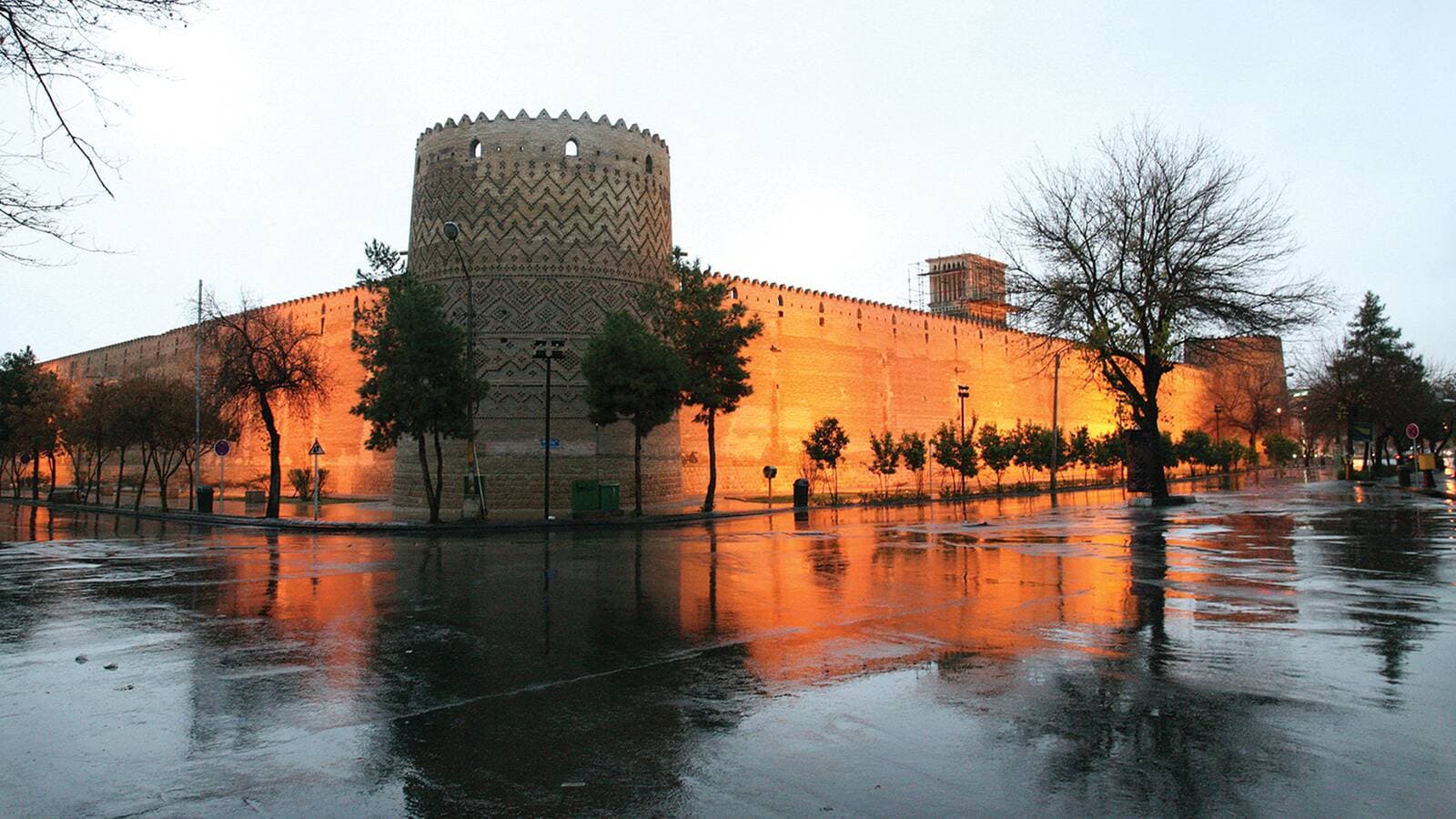
Persepolis Palace
Persepolis Palace, also known as Takht-e Jamshid, is one of the most iconic and historically significant sites in Iran, located near Shiraz. This ancient ceremonial capital of the Achaemenid Empire was founded by Darius I in 518 BCE and served as a grand symbol of the empire's power and sophistication. Persepolis is renowned for its monumental architecture and intricate reliefs that depict scenes of the king's audience, royal ceremonies, and delegations from various nations bringing tributes.
The complex consists of several impressive structures, including the Apadana Palace, the Hall of Hundred Columns, and the Gate of All Nations. The Apadana Palace, with its majestic staircase adorned with detailed carvings, served as the main audience hall and is one of the most striking features of Persepolis. The Hall of Hundred Columns, once a grand banquet hall, showcases the architectural prowess of the ancient Persians with its massive stone pillars and elaborate decorations.
Persepolis was meticulously constructed using limestone and features numerous inscriptions in Old Persian, Elamite, and Babylonian, providing valuable insights into the history and culture of the Achaemenid Empire. Despite being partially destroyed by Alexander the Great in 330 BCE, the ruins of Persepolis continue to awe visitors with their grandeur and historical significance. A visit to this UNESCO World Heritage Site offers a profound connection to the ancient world and a deeper understanding of Persia's illustrious past.
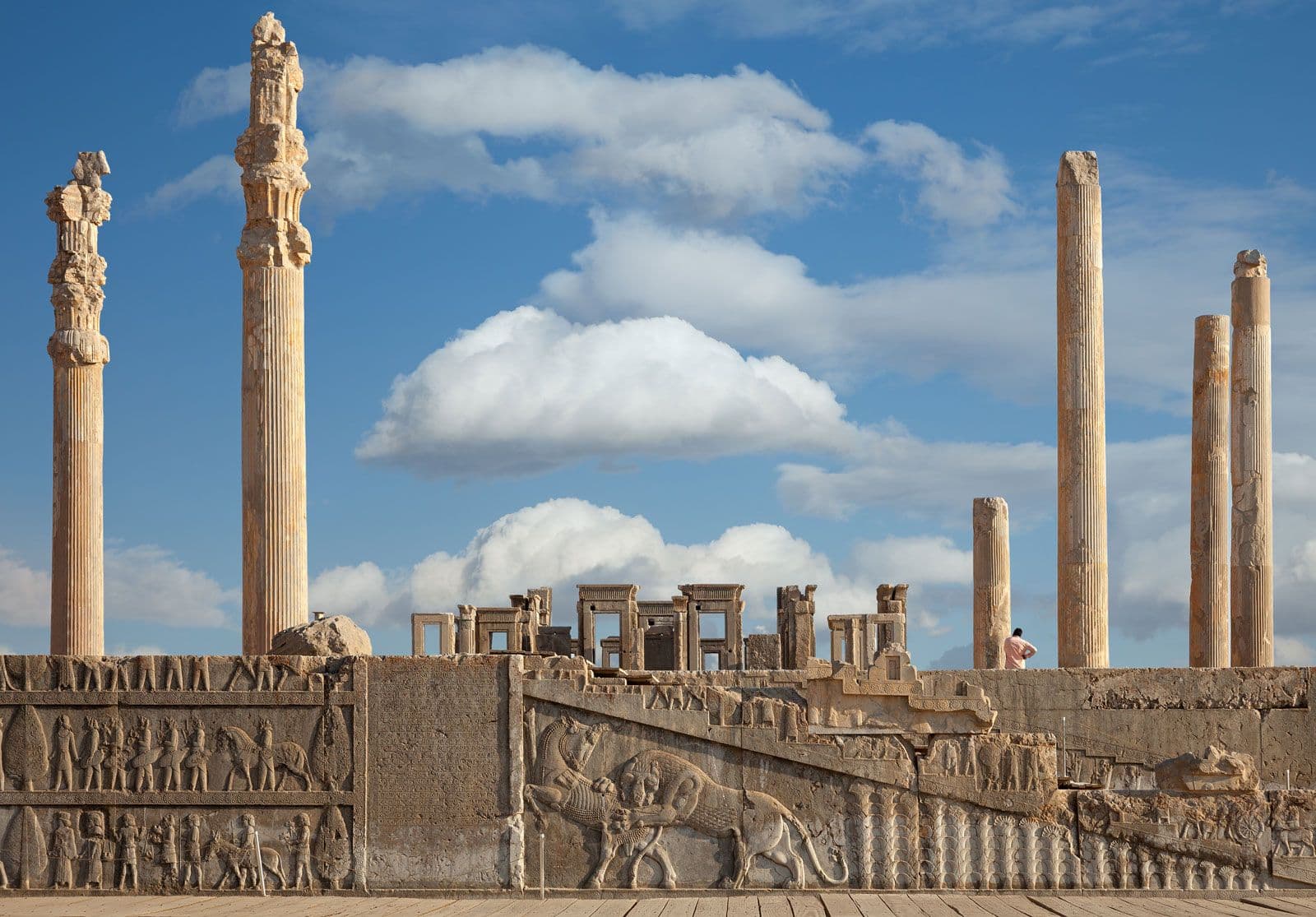
Conclusion
In conclusion, Shiraz stands as a testament to Iran's rich cultural and historical heritage, with its array of captivating historical sites. From the awe-inspiring ruins of Persepolis, a symbol of ancient Persian grandeur, to the serene and poetic ambiance of the Tombs of Hafez and Saadi, each site offers a unique glimpse into the city's illustrious past. The architectural marvels of the Nasir al-Mulk Mosque, Vakil Mosque, and Arg-e Karim Khan highlight the exquisite craftsmanship and artistic achievements of bygone eras. The lush and meticulously designed Eram Garden and the opulent Qavam House further enhance Shiraz's reputation as a city of beauty and refinement. Exploring these historical treasures not only provides a profound connection to Persia's storied history but also enriches the visitor's understanding of the cultural and artistic legacy that continues to shape Shiraz today. Whether you are a history enthusiast, an architecture lover, or a casual traveler, the historical places in Shiraz promise an unforgettable journey through time, revealing the timeless elegance and enduring spirit of this magnificent city.
Read More